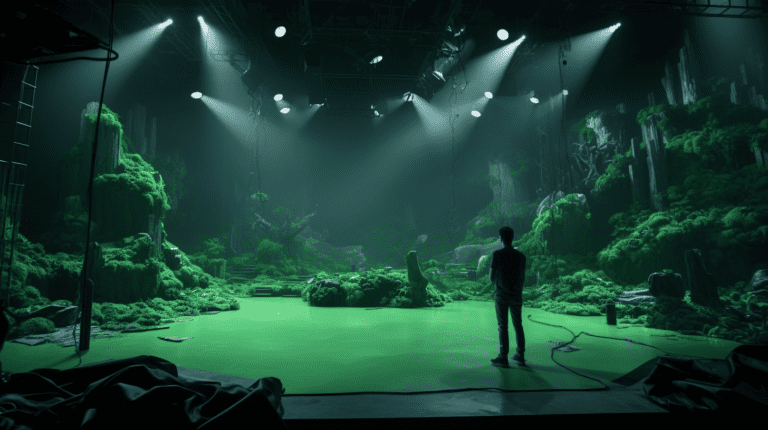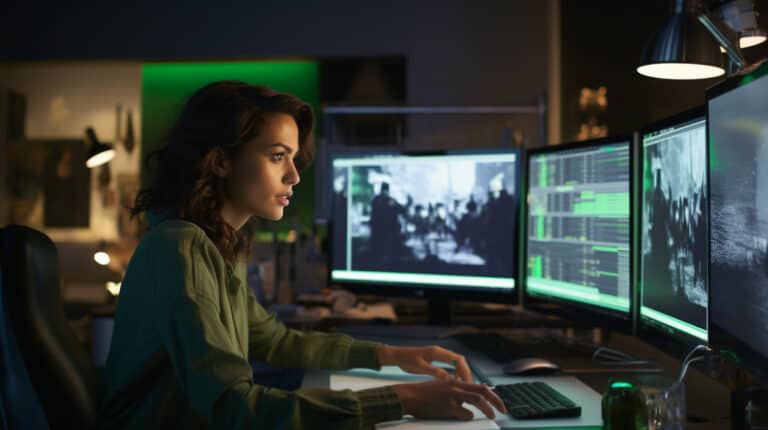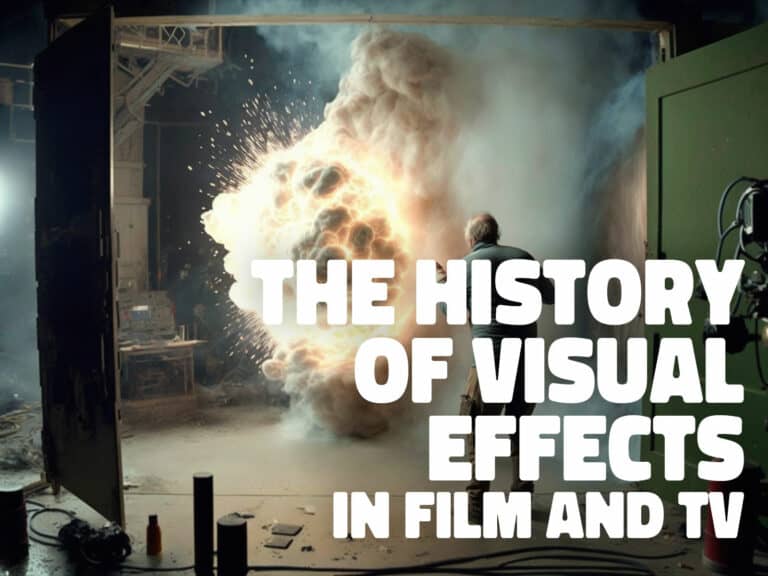Learning VFX for Free: A Comprehensive Guide
Are you eager to learn VFX without breaking the bank? Look no further! In this article, we’ll show you how you can master the art of visual effects for free.
From understanding the basics to accessing top-notch resources and learning from industry experts, we’ve got you covered. Discover the secrets to building a solid foundation and showcasing your VFX talents.
Get ready to embark on an exciting journey into the world of VFX without spending a dime.
Key Takeaways
- VFX skills are in high demand in the entertainment industry.
- Learning VFX can lead to opportunities in big-budget productions.
- There are free resources available online for learning VFX, such as Blender and YouTube tutorials.
- VFX enhances storytelling and creates immersive experiences in movies, TV shows, and video games.
Introduction
Are you fascinated by movies and the incredible visual effects that bring them to life?
Learning VFX skills has become increasingly important in the world of filmmaking, as it allows filmmakers to create stunning and realistic imagery.
The good news is that there are numerous free resources available to help you learn VFX, making it accessible to anyone with a passion for the craft.
The growing popularity of visual effects (VFX)
To get started on learning VFX for free, explore the growing popularity of visual effects (VFX) and how it can benefit you.
Visual effects have become increasingly popular in the entertainment industry due to their ability to enhance storytelling and create immersive experiences. From blockbuster movies to television shows and video games, VFX are used to transport audiences to fantastical worlds, bring imaginary creatures to life, and create breathtaking action sequences.
As the demand for VFX continues to rise, so does the need for skilled professionals in this field. By learning VFX, you can open up a world of opportunities in the entertainment industry, whether it’s working on big-budget productions or collaborating with independent filmmakers.
Not only can learning VFX provide you with a fulfilling career, but it also allows you to express your creativity and make a lasting impact on audiences around the world.
The importance of learning VFX skills
By learning VFX, you can develop essential skills that will set you apart in the entertainment industry.
VFX skills are in high demand: In today’s digital age, visual effects play a crucial role in movies, TV shows, video games, and even advertising. By mastering VFX, you can position yourself as a valuable asset in this competitive industry.
Creative expression through technology: VFX allows you to bring your imagination to life using cutting-edge software and tools. It offers endless opportunities for artistic expression and storytelling, enabling you to create visually stunning and immersive experiences.
Learning VFX skills isn’t just about acquiring technical expertise; it’s about unlocking your creativity and unleashing your potential. These skills can open doors to exciting career paths and provide you with a unique edge.
The availability of free resources for learning VFX
As you explore the world of VFX, you may be wondering where to find free resources to learn these valuable skills. Fortunately, there are numerous online platforms and communities that offer a wealth of knowledge and tutorials for aspiring VFX artists. Below is a table showcasing five popular websites that provide free resources for learning VFX:
| Website | Description | Key Features |
|---|---|---|
| Blender | An open-source 3D creation suite | Comprehensive tutorials and an active community |
| Video Copilot | A website offering VFX tutorials and plugins for Adobe After Effects | High-quality tutorials and free plugins |
| CG Cookie | A learning platform for digital artists | Courses on VFX, animation, and other digital skills |
| FXPHD | An online learning platform for VFX professionals | Offers mostly paid courses with a few free tutorials |
| YouTube | A video-sharing platform with a vast VFX tutorial library | Wide range of tutorials from various creators |
These resources provide a great starting point for learning VFX techniques and gaining practical experience. Take advantage of the vast knowledge available online and see how far you can go in your VFX journey.
Understanding VFX
Do you ever wonder how those jaw-dropping visual effects in movies, TV shows, and video games are created?
Visual effects, or VFX, are the art and science of manipulating images to create stunning and realistic illusions.
From bringing fantastical creatures to life to creating breathtaking environments, VFX plays a crucial role in enhancing storytelling and captivating audiences.
Understanding the power and impact of VFX can open up a whole new world of possibilities for your creative endeavors.
What are visual effects
Visual effects, or VFX, are the digital enhancements and manipulations used to create realistic and fantastical imagery in films, television shows, and other forms of visual media. They’ve become an integral part of modern storytelling, allowing filmmakers to bring their wildest dreams to life on the silver screen.
VFX can be categorized into two main types:
1) Special effects, which involve creating physical illusions on set, such as explosions or prosthetic makeup, and
2) Computer-generated effects, which are created using powerful software and computer algorithms.
Within these categories, VFX artists utilize various techniques, including CGI (Computer Generated Imagery), green screen compositing, motion tracking, and rotoscoping, to seamlessly blend real and digital elements.
The result is a visual spectacle that captivates and immerses the audience in a world of unlimited possibilities.
The role of VFX in movies, TV shows, and video games
VFX plays a crucial role in bringing imagination to life in movies, TV shows, and video games. It allows filmmakers and game developers to create stunning visuals that transport audiences to fantastical worlds and push the boundaries of what’s possible. From creating realistic explosions and alien creatures to building entire virtual environments, VFX artists use their technical skills and artistic vision to enhance storytelling and create immersive experiences.
The use of VFX can seamlessly blend practical effects with digital elements, making it difficult for viewers to distinguish between what’s real and what’s computer-generated. By harnessing the power of VFX, filmmakers and game developers can captivate audiences and transport them into worlds that were once only limited to the imagination. This ability to create visually stunning and immersive experiences through VFX is what truly sets movies, TV shows, and video games apart from other forms of storytelling.
Now, let’s explore the impact of VFX on storytelling and audience experience.
The impact of VFX on storytelling and audience experience
As an aspiring VFX artist, understanding the impact of visual effects on storytelling and audience experience is crucial to your journey in learning VFX for free.
Visual effects have revolutionized the way stories are told on screen, immersing audiences in fantastical worlds and enhancing the emotional impact of the narrative.
Here are two key ways in which VFX impacts storytelling and audience experience:
- Creating Spectacle: Visual effects allow filmmakers to create breathtaking scenes and jaw-dropping moments that captivate audiences. From massive explosions to fantastical creatures, VFX brings imagination to life, leaving viewers in awe and wonder.
- Enhancing Emotional Connection: VFX can also deepen the emotional connection between the audience and the story. By seamlessly integrating digital effects with live-action footage, VFX can evoke powerful emotions, whether it’s fear, excitement, or empathy. This heightened emotional experience keeps viewers engaged and invested in the narrative.
Understanding the impact of VFX on storytelling and audience experience empowers you to harness these techniques effectively in your own work, creating captivating visuals and memorable experiences.
Benefits of Learning VFX
Learning VFX can have numerous benefits for you.
It not only enhances your creativity and artistic skills but also opens up a world of career opportunities in the entertainment industry.
Enhancing creativity and artistic skills
Developing your artistic abilities and creativity can greatly benefit from learning VFX for free. By exploring the world of visual effects, you open yourself up to a whole new realm of artistic expression. Here are a few ways learning VFX can enhance your creativity and artistic skills:
- Expanded Imagination: VFX allows you to bring your wildest ideas to life, pushing the boundaries of what’s possible. It encourages you to think outside the box and explore new concepts, fostering a more imaginative mindset.
- Technical Proficiency: Learning VFX requires mastering various software, tools, and techniques. This technical knowledge not only enhances your problem-solving skills but also provides a solid foundation for creating visually stunning artwork.
Incorporating VFX into your artistic journey can unlock a world of possibilities, allowing you to push your creative boundaries and create truly captivating visual experiences.
Expanding career opportunities in the entertainment industry
By diving into the world of VFX, you can open up a multitude of career opportunities in the entertainment industry. The demand for visual effects in movies, TV shows, and video games is constantly growing, creating a need for skilled VFX artists. With the right training and knowledge, you can become a valuable asset in this competitive field.
Learning VFX not only allows you to showcase your creativity and technical skills but also gives you the chance to work with industry professionals and collaborate on exciting projects. Whether you aspire to be a VFX supervisor, a 3D modeler, or a compositing artist, the skills you acquire in VFX can take you places in the entertainment industry.
Developing a unique skill set in high demand
You can develop a unique skill set in high demand by learning VFX for free. With the increasing demand for visual effects in movies, television shows, and video games, mastering VFX can open up a world of opportunities.
Here are some benefits of learning VFX:
- Creative Expression: VFX allows you to bring your imagination to life by creating stunning visual effects that captivate audiences.
- Versatility: Learning VFX equips you with a versatile skill set that can be applied across various industries, including film, advertising, gaming, and even virtual reality.
- *Specializations*: Within the field of VFX, you can specialize in areas such as 3D modeling, compositing, motion graphics, or character animation, allowing you to focus on the aspects that interest you the most.
Finding Free VFX Learning Resources
Looking to learn VFX for free?
There are numerous online platforms that offer free tutorials and courses to help you get started. Popular websites and YouTube channels dedicated to VFX learning are also great resources to explore.
Additionally, don’t forget to utilize open-source software for your VFX projects, as they can provide valuable hands-on experience without any cost.
Online platforms offering free VFX tutorials and courses
Numerous online platforms provide access to free VFX tutorials and courses, allowing you to enhance your skills without any cost. These platforms offer a wide range of resources that can help you learn VFX techniques, software tools, and industry best practices.
Here are some key benefits of using these online platforms:
- Diverse Content: You can find tutorials and courses on various aspects of VFX, such as compositing, motion tracking, 3D modeling, and more.
- Interactive Learning: Many platforms offer interactive exercises, quizzes, and assignments to reinforce your understanding and application of VFX concepts.
- Community Support: These platforms often have forums or discussion boards where you can connect with other learners and industry professionals to seek guidance and feedback.
With these free online resources, you can start developing your VFX skills and knowledge right away.
Now, let’s dive into popular websites and YouTube channels that offer VFX learning opportunities.
Popular websites and YouTube channels for VFX learning
If you’re interested in learning VFX for free, one option is to explore popular websites and YouTube channels that offer a wealth of resources and tutorials. These platforms provide a great opportunity to learn from industry professionals and gain valuable insights into the world of visual effects.
Here are some popular websites and YouTube channels that you can check out:
| Website/YouTube Channel | Description |
|---|---|
| Video Copilot | Offers a wide range of tutorials and resources for VFX, motion graphics, and compositing. The tutorials are well-explained and cover various aspects of VFX production. |
| CG Cookie | Provides a platform for artists to learn VFX, 3D modeling, and animation. The website offers a mix of free and paid tutorials, with a focus on Blender, a popular open-source 3D software. |
| The Foundry | The Foundry’s YouTube channel features tutorials and tips for their VFX software such as Nuke and Mari. The tutorials are comprehensive and cover advanced techniques used in professional VFX production. |
These websites and YouTube channels can be great starting points for your VFX learning journey. Remember to explore other platforms as well to get a well-rounded understanding of the subject. Happy learning!
Utilizing open-source software for VFX projects
To learn VFX for free, start by utilizing open-source software for your projects. Open-source software provides a cost-effective way to explore and experiment with VFX techniques without breaking the bank. Here are some benefits of using open-source software for your VFX projects:
- Access to a wide range of tools: Open-source software like Blender and Natron offer a comprehensive set of features and tools for VFX, including 3D modeling, animation, compositing, and more.
- Community support and resources: Open-source software communities are known for their active and helpful members who are always ready to share their knowledge and provide support. You can find tutorials, forums, and online resources to help you learn and troubleshoot any issues you may encounter.
By leveraging open-source software, you can gain valuable VFX skills and create impressive visual effects without spending a dime.
Building a Strong Foundation
To build a strong foundation in VFX, you need to start by learning the basics of VFX terminology and concepts. This will give you a solid understanding of the language and principles behind visual effects.
Additionally, mastering the principles of animation and motion graphics will help you create more realistic and captivating visuals.
Learning the basics of VFX terminology and concepts
Start building your strong foundation in VFX by familiarizing yourself with the terminology and concepts. Understanding the basic terminology and concepts of VFX is crucial for anyone looking to dive into the world of visual effects. Here are some key areas to focus on:
- Terminology: Familiarize yourself with terms like compositing, keying, matte painting, rotoscoping, and tracking. Understanding these terms will help you communicate effectively with others in the VFX industry and grasp the various techniques used.
- Concepts: Learn about fundamental concepts such as color grading, CGI integration, particle systems, and 3D modeling. These concepts form the building blocks of VFX and will provide you with a solid foundation to build upon.
Understanding the principles of animation and motion graphics
Continue building your strong foundation in VFX by understanding the principles of animation and motion graphics.
Animation is the art of bringing objects, characters, and scenes to life through movement. It involves mastering concepts such as timing, spacing, and anticipation. By understanding these principles, you can create animations that are visually appealing and believable.
Motion graphics, on the other hand, focus on the design and animation of graphic elements, often used in film, television, and advertising. It combines visual effects, typography, and audio to convey information or evoke emotions.
Learning these principles will enable you to create stunning visual effects and captivating motion graphics. Take the time to study and practice these fundamentals, as they form the building blocks for your future success in VFX.
Mastering essential software tools for VFX creation
You can begin mastering essential software tools for VFX creation by familiarizing yourself with industry-standard programs. These programs are widely used in the VFX industry and having a strong foundation in them is crucial for your success.
Here are two sub-lists of essential software tools you should focus on:
3D Modeling and Animation:
- Autodesk Maya: This powerful software is widely used for 3D modeling, animation, and rendering.
- Blender: An open-source software that offers a comprehensive set of tools for modeling, animation, and more.
Compositing and Visual Effects:
- Adobe After Effects: A versatile program that allows you to create stunning visual effects and motion graphics.
- Nuke: A node-based compositing software used in high-end visual effects production.
Exploring Different VFX Techniques
Ready to take your VFX skills to the next level? Explore the fascinating world of compositing, where you’ll learn how to seamlessly merge different visual elements into one cohesive image.
Dive into the realm of 3D modeling and animation, where you can create stunning virtual objects that look incredibly realistic.
And don’t forget about the art of matte painting, where you can add intricate backgrounds to live-action footage, transporting your audience to a whole new world.
Let’s embark on this exciting journey together and uncover the endless possibilities of VFX techniques.
Compositing: merging multiple visual elements seamlessly
To master the art of compositing in VFX, start by understanding the techniques involved in seamlessly merging multiple visual elements. Compositing is the process of combining different elements, such as live-action footage, computer-generated imagery, and special effects, to create a cohesive and realistic final image.
Here are two key techniques to help you achieve seamless composites:
- Rotoscoping: This technique involves tracing and isolating specific elements within a frame, allowing you to manipulate or replace them individually. It requires precision and attention to detail to ensure a seamless blend.
- Keying: Keying is the process of removing a specific color or brightness range from an image to create transparency. This technique is commonly used for green screen or blue screen compositing, where the subject is filmed against a solid-colored background.
3D modeling and animation: creating realistic virtual objects
To excel in VFX, continue your exploration by delving into the world of 3D modeling and animation. This allows you to create lifelike virtual objects that seamlessly integrate into your visual effects compositions.
3D modeling is a technique that allows you to sculpt and shape digital objects with precision and detail. It brings your imagination to life and gives you the ability to create any object you can envision.
Mastering animation techniques is also crucial in creating compelling visual effects. With animation, you can give these 3D objects movement and personality, making them appear as if they exist in the real world.
The possibilities with 3D modeling and animation are vast. You can create fantastical creatures, futuristic environments, or realistic simulations. These tools give you the power to captivate and engage your audience with stunning visual effects.
Matte painting: adding detailed backgrounds to live-action footage
Start exploring the technique of matte painting, which involves adding intricate backgrounds to live-action footage, to enhance your VFX skills. This technique allows you to create realistic and visually stunning environments that seamlessly blend with the live-action footage.
Here are some key aspects to consider when learning matte painting:
- Understanding perspective: Learn how to accurately match the perspective of the live-action footage to create a convincing background.
- Mastering lighting and color: Study how light interacts with different surfaces and how to recreate it in your matte painting to achieve a cohesive look.
- Incorporating textures and details: Pay attention to small details such as texture, weathering, and architectural features to make your matte paintings more believable.
By mastering these techniques, you’ll be able to create breathtaking backgrounds that enhance the overall visual appeal of your VFX work.
Now, let’s move on to practicing VFX skills and further honing your abilities.
Practicing VFX Skills
To truly sharpen your VFX skills, you must engage in personal projects and exercises that challenge your abilities and push you to think creatively.
Additionally, collaborating with other aspiring VFX artists provides an opportunity to learn from each other, exchange ideas, and inspire one another.
Lastly, participating in online VFX communities and challenges allows you to showcase your work, receive feedback, and stay updated with the latest trends and techniques in the industry.
Engaging in personal VFX projects and exercises
By actively participating in personal VFX projects and exercises, you can enhance your VFX skills for free. Engaging in these projects allows you to apply the techniques and concepts you’ve learned, further developing your understanding and proficiency in VFX.
Here are two ways you can engage in personal VFX projects and exercises:
- Recreating VFX shots: Choose a scene from a movie or a video game and attempt to recreate the visual effects using your own software and tools. This exercise will challenge you to analyze and break down complex shots, improving your problem-solving skills and attention to detail.
- Creating original VFX: Use your creativity to come up with original VFX ideas and bring them to life. Experiment with different techniques and styles, pushing the boundaries of your skills and expanding your VFX repertoire.
Collaborating with other aspiring VFX artists
You can enhance your VFX skills for free by collaborating with other aspiring VFX artists. Working with others in the same field allows you to learn from their experiences and gain new perspectives on VFX techniques. By joining online communities or attending local meetups, you can connect with like-minded individuals who share your passion for visual effects.
Collaborating on projects together not only helps you practice your skills but also allows you to exchange feedback, learn from each other’s mistakes, and push each other to improve. Additionally, working in a team setting simulates real-world production environments, teaching you valuable skills such as communication, teamwork, and problem-solving.
Participating in online VFX communities and challenges
One way to further enhance your VFX skills for free is through active participation in online VFX communities and challenges.
Engaging with these communities allows you to connect with other like-minded artists, share knowledge, and receive valuable feedback on your work.
By participating in challenges, you can push yourself to tackle new and exciting projects, which in turn helps you develop your technical skills and artistic abilities.
Additionally, these communities often provide resources such as tutorials, industry news, and job opportunities, giving you access to a wealth of information that can further support your learning journey.
Through active involvement in these online communities and challenges, you can continuously practice and refine your VFX skills while also staying connected to a supportive network of fellow artists.
Learning from Industry Professionals
Want to learn from the best in the VFX industry? Attend webinars and workshops hosted by experienced professionals who can share their knowledge and insights with you.
Take advantage of social media platforms to follow influential VFX artists and learn from their work and experiences.
Additionally, seek mentorship opportunities within the VFX industry to gain personalized guidance and advice from experts in the field.
Attending VFX webinars and workshops
To learn VFX for free, consider attending VFX webinars and workshops led by industry professionals. These online events provide a valuable opportunity to learn from experts in the field and gain insights into the latest techniques and trends in VFX.
Here are some reasons why attending these webinars and workshops can be beneficial:
- Learn from the best: Industry professionals have a wealth of knowledge and experience to share. By attending their webinars and workshops, you can learn directly from the experts and gain valuable insights into their workflows and techniques.
- Stay updated: VFX is an ever-evolving field, with new tools and techniques constantly emerging. Attending webinars and workshops allows you to stay up-to-date with the latest developments in the industry and ensure that your skills remain relevant.
- Networking opportunities: These online events often provide networking opportunities, allowing you to connect with other aspiring VFX artists and industry professionals. Building a network can open doors to future collaborations and job opportunities.
Following influential VFX artists on social media
Start by following influential VFX artists on social media to learn from industry professionals. This is a great way to gain insights, stay updated with the latest trends, and get inspired by their work. By following these artists, you can access a wealth of knowledge and experience that they share through their posts, tutorials, and behind-the-scenes glimpses. To give you an idea, here’s a table showcasing some influential VFX artists and their social media handles:
| Artist Name | Social Media Handle |
|---|---|
| Andrew Kramer | @videocopilot |
| Ash Thorp | @Ashthorp |
| Allan McKay | @allanmckay |
Following these artists will expose you to their creative processes, techniques, and workflows, helping you develop your skills and broaden your understanding of the VFX industry. Now, let’s move on to the next step: seeking mentorship opportunities in the VFX industry.
Seeking mentorship opportunities in the VFX industry
You can begin by actively seeking out mentorship opportunities from industry professionals in the VFX industry. Connecting with experienced individuals who’ve already established themselves in the field can provide invaluable guidance and insights into the world of visual effects.
Here are some ways you can find mentorship opportunities:
- Attend industry events and conferences: These gatherings often attract professionals who are willing to share their knowledge and experiences. Take the opportunity to network and engage with experts in the VFX industry.
- Join online communities and forums: Platforms like LinkedIn groups or specialized VFX forums can connect you with industry professionals who may be open to mentoring aspiring artists.
- Reach out directly: Don’t be afraid to contact professionals you admire and respectfully ask if they’d be interested in mentoring or providing advice. Many professionals are willing to help others on their journey.
Showcasing Your VFX Portfolio
When it comes to showcasing your VFX portfolio, there are a few key points to keep in mind.
First, you need to create an impressive demo reel or portfolio website that highlights your best VFX projects and skills.
Second, it’s important to tailor your portfolio to specific job opportunities, showcasing the skills and projects that are most relevant to the position you’re applying for.
Creating an impressive demo reel or portfolio website
To showcase your VFX portfolio, consider using a platform like Behance or ArtStation to display your impressive demo reel or portfolio website. These platforms offer a visually appealing and professional way to present your work to potential employers or clients.
Here are a few tips to create an impressive demo reel or portfolio website:
- Choose a clean and organized layout that highlights your best work.
- Include a variety of projects that demonstrate your range of skills and expertise.
- Use high-quality images and videos to showcase your work effectively.
- Provide clear and concise descriptions for each project, highlighting your role and the techniques used.
- Make sure your website is easy to navigate and mobile-friendly.
By creating an impressive demo reel or portfolio website, you can effectively showcase your VFX skills and attract attention from the industry.
Now, let’s move on to the next section and discuss how to highlight your best VFX projects and skills.
Highlighting your best VFX projects and skills
Create a visually captivating VFX portfolio that effectively showcases your best projects and skills. Your portfolio should be a stunning visual representation of your abilities and creativity in the field of VFX. Choose your strongest projects and highlight them prominently, ensuring that they demonstrate a wide range of techniques and styles.
Include a variety of different types of VFX work, such as compositing, motion graphics, and 3D animation, to showcase your versatility. Additionally, provide detailed descriptions and breakdowns of your projects to give potential employers a deeper understanding of your process and technical skills.
Remember to organize your portfolio in a way that flows smoothly and is easy to navigate. By presenting your best work and skills, you’ll make a lasting impression and increase your chances of landing the job you desire.
Transition to the next section: Now that you have created a visually captivating VFX portfolio, the next step is to tailor it to specific job opportunities.
Tailoring your portfolio to specific job opportunities
Once you have created a visually captivating VFX portfolio, it’s time to tailor it to specific job opportunities by showcasing your skills and projects that align with the requirements of each position. To effectively showcase your VFX portfolio, consider the following:
- Research the job requirements: Understand the specific skills and expertise sought by each job opportunity. This will help you identify which projects and skills to highlight in your portfolio.
- Customize your portfolio: Select projects that demonstrate your proficiency in the desired software, techniques, and styles. Showcasing relevant experience will increase your chances of standing out to potential employers.
- Include a variety of projects: Demonstrate your versatility by including a range of projects that showcase different aspects of your skills and creativity. This will highlight your ability to adapt to different project requirements.
Pursuing Further Education and Career Paths
If you’re serious about pursuing a career in VFX, it’s worth considering formal education in VFX or related fields. This can provide you with the necessary knowledge, skills, and industry connections to excel in the field.
Additionally, exploring different career paths within the VFX industry and networking with professionals can open up new opportunities and help you find the right path for your interests and goals.
Considering formal education in VFX or related fields
When considering formal education in VFX or related fields, it’s important to explore your options and make an informed decision. Here are some factors to consider:
- Accredited institutions: Look for schools or programs that are recognized and respected in the industry. This will ensure that you receive a quality education.
- Curriculum: Evaluate the courses and specialization options offered. Consider whether the program aligns with your career goals and interests.
- Faculty and industry connections: Research the faculty members’ credentials and industry experience. Find out if the program has connections with professionals or studios in the VFX industry.
- Internship and job placement opportunities: Check if the program provides internships or helps with job placement. Practical experience is crucial in this field.
Exploring different career paths within the VFX industry
To explore different career paths within the VFX industry, start by researching the various specializations available. VFX is a vast field that offers a wide range of career opportunities, from 3D modeling and animation to compositing and visual effects supervision. Each specialization requires a unique set of skills and knowledge, so it’s important to understand what each role entails and which one aligns with your interests and strengths.
Take the time to explore different companies and studios, learn about the projects they work on, and see if their work resonates with you. By understanding the different career paths available, you can make an informed decision about which direction to pursue within the VFX industry.
With this knowledge, you can then transition into the next step of networking and seeking job opportunities in the VFX field.
Networking and seeking job opportunities in the VFX field
Start by actively engaging in networking and seeking out job opportunities in the VFX field to pursue further education and career paths.
Networking is crucial in any industry, and the VFX field is no exception. Attend industry events, join online forums and communities, and connect with professionals already working in the field. This won’t only help you stay updated on the latest trends and technologies but also open doors to potential job opportunities.
Additionally, actively seeking out job opportunities is essential for advancing your career in VFX. Keep an eye on job boards and websites that specialize in VFX jobs, and regularly update your portfolio and resume.
Conclusion
As you conclude your exploration of learning VFX for free, remember the accessibility of resources that can help you acquire the necessary skills.
However, it’s essential to understand that practice, dedication, and continuous learning are crucial in mastering VFX techniques.
The accessibility of free resources for learning VFX
You can access a wide range of free resources to learn VFX. The accessibility of these resources makes it easier than ever to develop your skills in visual effects. Here are two sub-lists that provide a visual representation of the available options:
Online Tutorials and Courses:
- YouTube tutorials: A vast collection of VFX tutorials can be found on YouTube, covering various software and techniques.
- MOOCs: Massive Open Online Courses offer free VFX courses taught by industry professionals, allowing you to learn at your own pace.
Community Forums and Websites:
- VFX forums: Participate in online communities to connect with other aspiring VFX artists, ask questions, and share your work.
- Websites and blogs: Many websites and blogs provide free resources, such as articles, tutorials, and downloadable assets, to help you learn VFX.
With these accessible resources at your disposal, you have the opportunity to learn VFX without breaking the bank. So seize the chance, explore these free options, and embark on your VFX learning journey.
The importance of practice, dedication, and continuous learning
To truly excel in learning VFX for free, it’s crucial to prioritize consistent practice, unwavering dedication, and a commitment to continuous learning.
VFX is a dynamic field that’s constantly evolving, with new techniques and software being developed regularly. By dedicating yourself to consistent practice, you can refine your skills and stay up-to-date with the latest industry trends. This requires discipline and perseverance, as VFX can be challenging and time-consuming.
Additionally, it’s important to have a thirst for knowledge and a willingness to learn from various sources, such as online tutorials, forums, and industry professionals. By embracing a mindset of continuous learning, you can expand your skillset and adapt to the ever-changing demands of the VFX industry.
With practice, dedication, and a commitment to continuous learning, you can unlock your full potential and pave the way for a successful career in the exciting world of VFX.
The potential for a successful career in the exciting world of VFX
By embracing consistent practice, dedication, and continuous learning, you can unlock your full potential and pave the way for a successful career in the exciting world of VFX.
The potential for a successful career in VFX is immense, with opportunities in film, television, gaming, and advertising industries.
Here are two key factors that contribute to a successful career in VFX:
- Technical skills: Mastering the necessary software and tools is essential in VFX. Stay updated with the latest techniques and software advancements to stay ahead in this competitive field.
- Collaboration and communication: VFX is a team effort, requiring effective communication and collaboration with directors, producers, and fellow artists. Developing strong interpersonal skills will help you thrive in this industry.
Frequently Asked Questions
What Are Some Popular Software Programs Used in Vfx?
Some popular software programs used in VFX include Adobe After Effects, Autodesk Maya, and Nuke. These tools allow you to create stunning visual effects and bring your imagination to life in the world of filmmaking.
How Long Does It Typically Take to Learn Vfx?
Typically, it takes time and dedication to learn VFX. The duration depends on your prior experience and the complexity of the skills you want to acquire. Keep in mind that practice and exposure to industry-standard software are crucial for growth.
Are There Any Online Communities or Forums Where I Can Connect With Other VFX Learners?
There are several online communities and forums where you can connect with other VFX learners. They provide a platform to share knowledge, ask questions, and receive feedback, making your learning journey more interactive and collaborative.
Can I Learn VFX Without Any Prior Experience in Art or Animation?
You can definitely learn VFX without prior art or animation experience. There are plenty of free resources available online that provide step-by-step tutorials and lessons to help you get started.
Are There Any Specific Hardware Requirements for Learning Vfx?
To learn VFX, you don’t need any specific hardware requirements. Focus on building your skills, understanding the software, and creating stunning visuals. Don’t let hardware limitations hold you back from exploring this exciting field.







